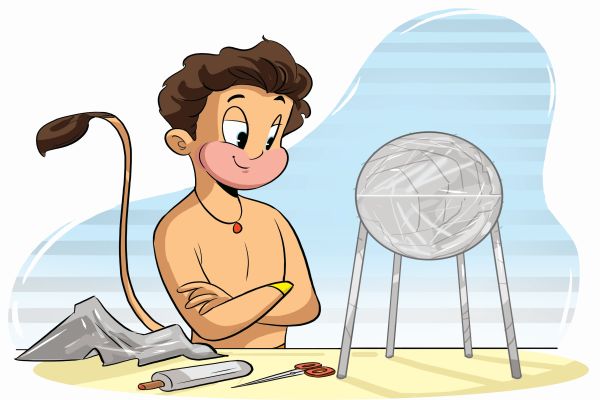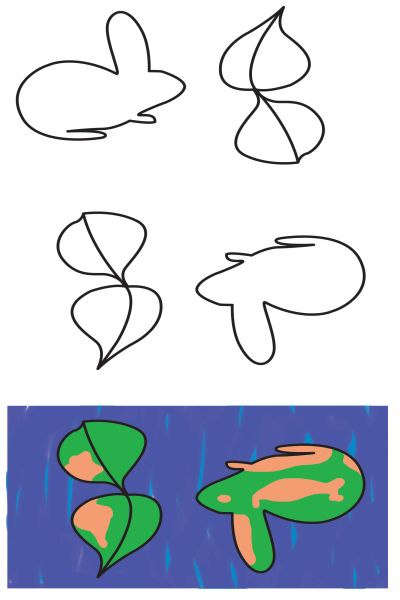View from space
- POSTED ON: 5 Jul, 2023
- TOTAL VIEWS: 188 Views
- POSTED BY: Jagadeesh Kanna | Article by R. Krithika
- ARTICLE POINTS: 100 Points
After hearing the Japanese folk tale about the rabbit on the moon, Hanuman checks the original footage from Chandrayaan 1. Now he is curious to hear the Indian version of the story.

Illustration: Sahil Upalekar
Hanuman: You mentioned that India also had a version of the rabbit on the moon.
Vaayu: When I was time travelling, I came across a conversation between Sage Ramanuja and his student. The latter wanted to know how the Earth looks when viewed from the Moon.
Hanuman: So what did the sage say?
Vaayu: In reply, Ramanuja quotes a conversation between King Dhritarashtra and Sanjaya from the Mahabharata. There, Sanjaya explains how the Earth looks to King Dhritarashtra, as he is blind. Remember, Sanjaya also has divine vision.
Hanuman: So what was Sanjaya’s explanation?
Vaayu: His answer was: the way a person sees his face in a mirror is how the earth’s reflection is on the moon.
Hanuman: How is that possible?
Vaayu: Sanjaya talks about the shadow reflection of a rabbit and two leaves on the moon.
Hanuman: I don’t understand.
Vaayu: Okay. Let me show you with a drawing.
Hanuman brings a paper and pencil
Vaayu: Now draw a rabbit and two leaves one on top of the other.
Hanuman: Okay. Done.
Vaayu: Now turn the image upside down.

Illustration: Satheesh Vellinezhi
Hanuman: Wow! It actually looks like the Earth from the top. Is this story real?
Vaayu: There is a lot of debate about it. But, any way, humans started using satellites to see what the Earth looked like from space.
Hanuman: Wait. What is a satellite?
Vaayu: Any object that orbits a celestial body is a satellite. There are natural satellites and artificial ones.
Hanuman: I remember Nala told me about about this. (Ref. Episode 8). The Moon is a natural satellite and orbits Earth with a specific angular velocity. But who launched the first artificial satellite?
Vaayu: The first artificial satellite was Sputnik, launched by the Soviet Union on October 4, 1957. It was the size of a basketball and orbited the Earth for three months.
Vaayu: But what did it do? Take photos?
Vaayu: No. It just sent a beeping sound. But the successful launch of Sputnik set off a space race between the U.S. and the Soviet Union.
Hanuman: I want to see that satellite.
Vaayu: It’s very simple. You can make a static model. All you need is chopsticks, aluminium foil and a plastic ball.
Hanuman follows the steps and makes the model.
Hanuman: What happened after the launch of Sputnik?
Vaayu: Given the competition between the U.S. and the Soviet Union, within 25 years, humans went into space and even landed on the Moon. Space stations like Salyut, Skylab, MIR and ISS allowed humans to visit outer space and even live there for some years.
Hanuman: Wow! That’s great.
Vaayu: Remember, competition can be good but enemity is not good.
Hanuman nods, without knowing that these words will one day lead to a huge battle.
The author is the founder and CEO of Vaayusastra Aerospace, an IIT-Madras incubated ed-tech startup that offers Air Science workshops for children between five and 14 years.
Now that you’ve read about the Sputnik, how about making a model of the world’s first artificial satellite for yourself? It’s pretty simple. Just follow the instructions in the images below and voila, you are done!
Materials Required: 4 Chopsticks, Aluminum foil, a plastic ball